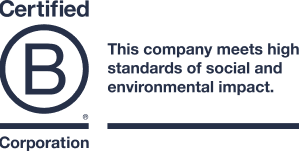5 Shocking Statistics About the State of Plastic Pollution in Our Oceans
Since the 1950s, 8 billion tons of plastics have been produced globally. However, only 21 percent of plastics have been recycled or burned, while the remaining 79 percent end up in our environment, including our oceans. Nearly 13 million tons of plastic enter the major oceans every year: currently, there’s an estimated five trillion pieces of plastic and counting.
- There are 79,000 Metric Tons in the Pacific
In each of the 5 oceans, gyres are overtaking the aquatic life and causing damage to the ecosystem. These gyres - naturally occurring whirlpools – are perpetuated by wind currents but regulate the flow of pollution as well.
Once discarded, plastics that find their way to the oceans can be broken down by waves and sunlight. This plastic blocks the sunlight, affecting algae and plankton growth. This cycle of pollution occurs most prominently when pollution drifts off the shores of surrounding continents as well as during import and exportation.
The largest debris collections seem to exist near populous coastlines, with the Pacific Ocean having the largest accumulation of plastic pollution amongst the 5 oceans. The Pacific Ocean’s gyre exists as two large patches between California and Japan. They are referred to by scientists as the Great Pacific Garbage Patches, two swirling masses of debris.
Nature.com' s scientific reports section predicts that a surprising 79 thousand metric tons of ocean plastics and counting have been garnered by the Pacific. 94 percent of these plastics are identified as microplastics. Microplastics, almost too small to see with the naked eye, can take many forms.
- Millions of Microplastics Exist Beneath the Atlantic
However, of all the plastic polluting the sea, the surface of the oceans receives only 1 percent of plastic pollution. The rest of the 99 percent is at varying levels below the surface. Unfortunately, Scientists are only beginning to quantify plastic pollution in the past decade.
In the North and South Atlantic Oceans, those linking Europe and Africa to North and South America, the numbers reflect their concern. Ms. Pabortsava, a researcher at the NOC (National Ocean Center) in the UK, and her team took samples and found that there are 21 million metric tons of microplastic200 meters deep in the Atlantic Ocean.
Concerns that there’s more on the ocean floor are justified. Unfortunately, the estimated number of small plastics in the entirety of the Atlantic is unclear.
- 12,000 Microplastics Per Liter of Sea Ice Found in the Arctic
The Arctic Ocean, though not as populated as other parts of the earth, has one of the largest collections of plastic pollution. Currently, more than 12 thousand particles of microplastic can be found per liter of sea ice. Even more disturbing, airborne plastics are reported to fall from the sky, mixed in with the snow.
- There are Over 14,000 Particles Per Liter in the Fram Strait
The Fram Strait, a hub for ocean currents between Greenland and Svalbard Islands, contains about 14,000 particles per liter of sea ice. That’s only a slightly larger difference than what’s happening in the Arctic on the other side of Greenland. In total, the Northern hemisphere is above 25,000 in microplastic, an alarming estimate considering the effects of climate change in the region.
Most of the plastics in the Arctic and Fram Strait derive from our laundry habits and textile production. Tiny plastic fibers that had fallen from clothing end up in the Arctic waters through wastewater and travel up as far as the North Pole via ocean currents. This problem borders Canada and Norway, with 92% of the plastics being microfibers from polyester.
- 50,000 Microfibers Were Discovered in the ‘Pristine’ Ocean
Even the Southern Ocean, previously thought to hold less plastic pollution than the others, is contaminated with microfibers. Recently, reports revealed that more than 50,000 fragments per square kilometer of microplastic exists beneath the Southern Ocean.
Just as researchers expected, it is close to the rate of the global average.
Chris Bowler, a scientific coordinator for Tara Oceans, the oceanic research expedition conducting this research, believes that the best way to combat these problems is to ‘advocate the use of biodegradable technologies while emphasizing a shift in human practices.’ For most, this means switching to all-natural products and supporting local eco-friendly policies.
His solutions are notable, as he and his team surmised that the debris gradually drifted into the Southern Ocean from Africa, South America, or Australia over half a century. Microscopic fragments were found in their trawling nets containing degraded plastic bags and bottles. He and his team were shocked to discover that a large portion of the plastic fragments included synthetic fibers.
Let's Make it Better
Every year, billions of plastic particles overtake the oceans. The US in particular is in the top 20 countries with the largest plastic pollution problem, with China being the number one contributor. However, this does not matter.
The ocean is the midway point for every organism alive. As such, we must be armed with the knowledge of how nature interacts with our inconsiderate habits. Without this understanding, we prevent ourselves from making the correct decisions for our animal counterparts and their habitats.
FiveADRIFT and its team have found easy ways to reduce plastic use - especially single use plastic - and will continue to share them on this blog. It's super easy to make it an automatic habit. You could also buy one of our totally plastic free luxury beach towels to dry off this summer at the beach and we'll go grab a heap of plastic out of the ocean on your behalf.
Doing so will improve our lifestyle, override anti-environmental practices and policies, restore aquatic ecosystems, and combat the spread of plastic pollution.


